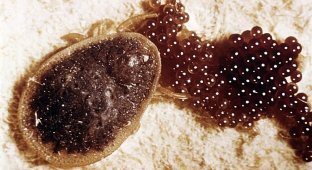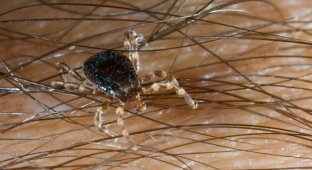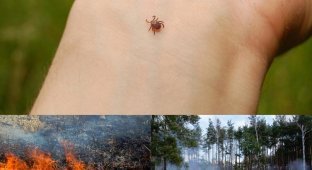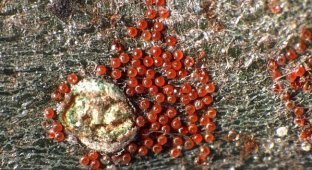As if the ixodid ticks that sit on every blade of grass, bite people in the groin and infect them with all sorts of nasty things weren't enough for us. It turns out that ticks also live in bodies of water! They are in every river and every lake without exception! Should we be afraid for our blood? 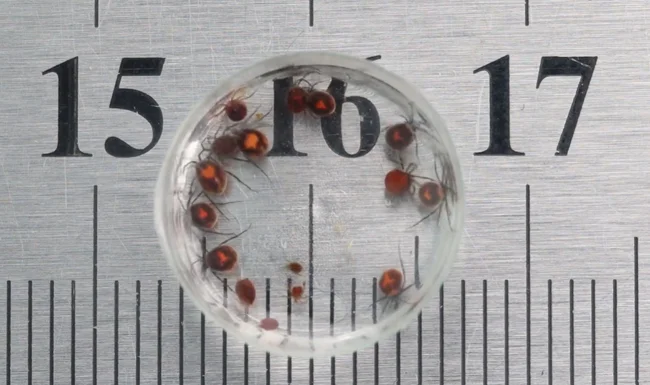
I look at them and immediately feel some kind of aggression in my soul...
Let's start with bad news for all tick-phobes: it's impossible to hide from them. Water mites are not just extremely widespread – they are the most numerous group of mites on the planet. 6,000 species are found everywhere, excluding only some particularly harsh islands and bodies of water in Antarctica. And by “everywhere” we mean any habitat that is at least somewhat damp. Underground reservoirs, large puddles, damp moss, rotting wood and even hot springs – there is nowhere to hide from the little eight-legged creatures! 
A cute arrhenius mite from one of the Pacific Ocean islands.
And what's worse, they look like typical ticks with their round red-orange bodies and long bristly legs. The resemblance is so great that you won't be able to fool your brain. You won't be able to escape the realization that you're swimming in the same lake with thousands of ticks. 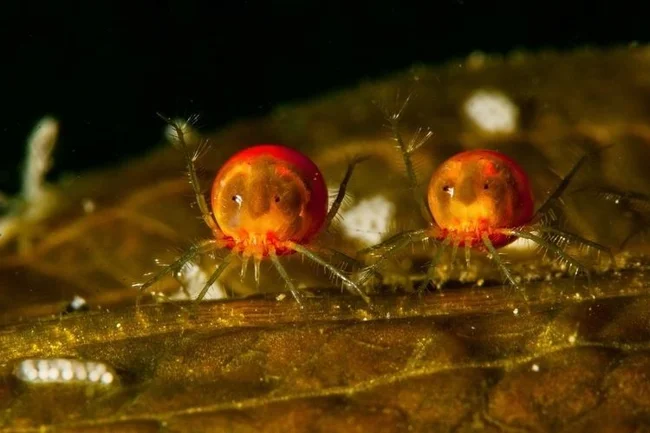
And here they are even... cute?
But perhaps you will be helped by the fact that the resemblance to land ticks is purely superficial. Water ticks do not have a tracheal system; they breathe through the entire surface of their body through a thin cuticle. They also lack a hindgut - undigested remains leave the body without staying for a second. These changes in the body structure are a consequence of their small size and aquatic lifestyle. If there is no shortage of water, why save it and suck it out of your own waste? Throw it out of the body - and that's the end of it! What? Now they seem even more unpleasant? Then you won't like the following information either. 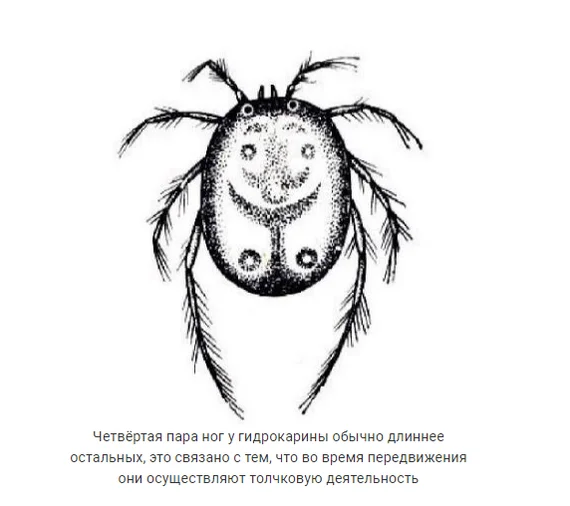
I'm not the only one who sees a face on his back, am I?
They feed in the same way as land ticks: they stick their proboscis into the prey, inject digestive enzymes and suck out the nutritious soup. Moreover, the diet of adults and larvae is very different, which is very convenient from an ecological point of view - young animals do not compete with adult animals. 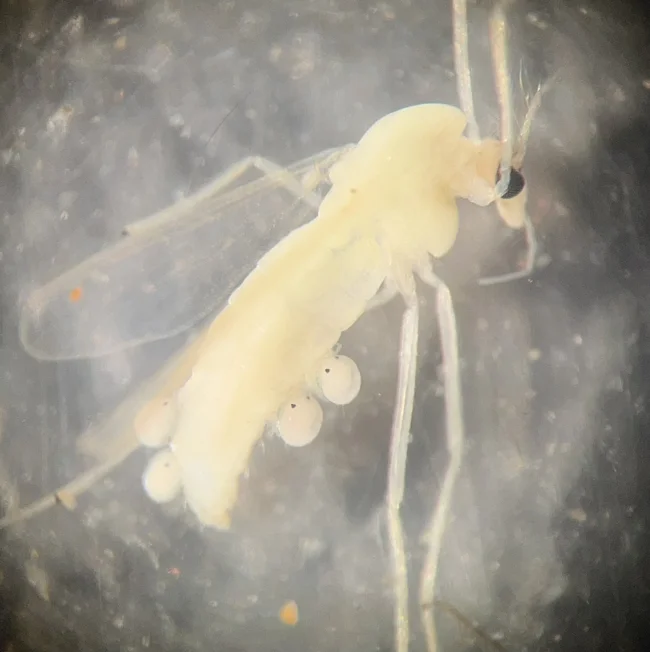
Small balls with eyes kiss a large cylinder with eyes. Wildlife is touching!
Adult ticks are free-living predators that feed on ultra-small prey. You can determine what exactly a particular tick species eats by the structure of their pedipalps - special limbs used to capture the victim. Pincer-shaped pedipalps are typical of species that feed on insect eggs and crustacean eggs. Hooked pedipalps are found in those that specialize in hunting river crustaceans. And simple flexible tentacles are typical for species that hunt insect larvae. 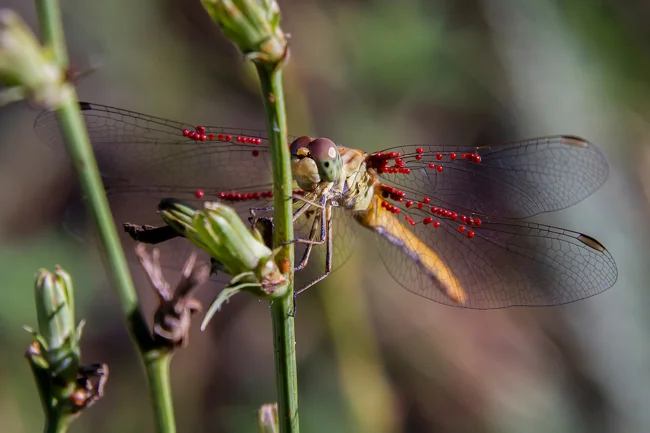
A forced carrier of ticks. I don't think he's happy with his situation...
But their young are unpleasant, with pronounced parasitic tendencies. Luckily for us, they are only interested in mollusks, aquatic arthropods and flying insects that lay eggs in water. They catch the latter during reproduction. 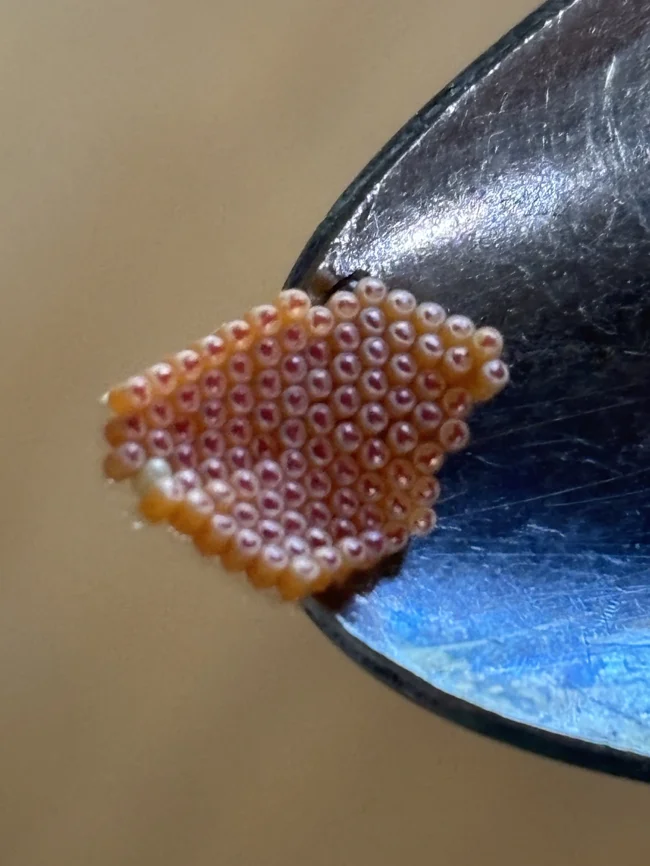
Would you like some tick caviar?
Since laying eggs is not a quick process, young ticks have time to smell the prey, climb on it and stick their proboscis into the veins on the wings - the most vulnerable part of the insect. Several ticks will not cause much damage, but a dozen hemolymphosos will ruin the aerodynamics and suck all the juices out of the prey. The satiated larva falls into the water, molts into an adult form and goes looking for a soul mate. If you read the text carefully enough, you already understood that ticks are not dangerous to people. But it turns out that they are also useful to us - they hunt mosquito larvae! 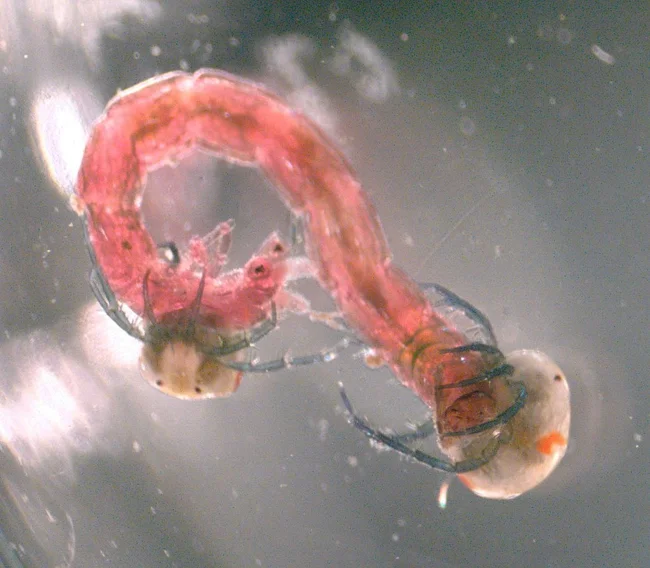
Ticks eat the larva of the chironomus mosquito.
If this argument is not enough for you, here are a couple more: due to the high rate of reproduction, they serve as the foundation for the food pyramid of river ecosystems, and due to the minimal margin of safety, they play an important role in assessing the state of lakes. With any dangerous change in the composition of the water, the species diversity of ticks changes almost instantly! 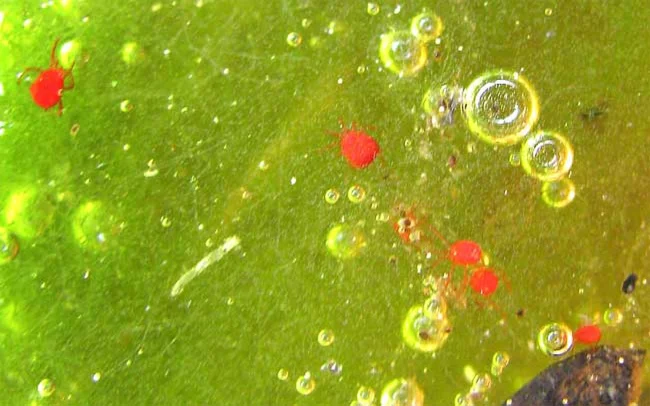
Take a closer look at any body of water and you'll see these beauties there.
In fact, ticks have only one serious drawback for humans - they are tasteless. When in danger, the octopuses secrete mucus, which is disgusting to us and some types of fish. But you didn't plan to eat water ticks, did you?
3 comments
Add your comment
You might be interested in:













